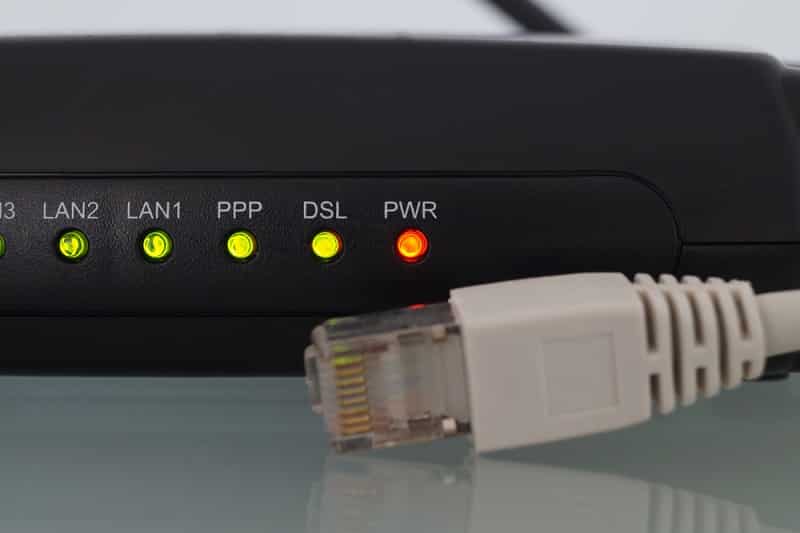
DSL stands for Digital Subscriber Line and provides a fast and reliable Internet connection that makes downloading and using the Internet a breeze. If you are considering getting a DSL connection or you already have one and you are trying to tackle the setup, here are a few pointers on how to setup and configure a DSL modem.
Setting up a DSL Modem
A DSL modem provides you with high speed Internet connectivity by connecting your PC with your phone lines which enables both services to be used simultaneously without interfering with one another. You may have obtained a DSL modem through your Internet Service Provider or you can choose to purchase one from an electronics store in your local area or online.
- Install the Filters: There are filters that are necessary to install which may be included with your DSL modem or you may be required to purchase them separately. The filters should be installed into the phone outlets in your home that are not providing your DSL Internet connection. The filters allow you to use your telephone and the Internet simultaneously and without interference.
- Connect the Modem: Unpack the DSL modem and then plug it into the nearest AC outlet and then turn on the unit. Plug the modem into the telephone outlet that does not have a filter installed.
- Connect the Modem to Your PC: Use an Ethernet cable to connect the DSL modem to your PC. This is typically a blue cable that you use to connect to the Ethernet port on your PC and contains an Ethernet connection at both ends of the cable.
These are the basic steps you should follow prior to configuring the DSL modem to provide high speed Internet connectivity. It is also important to note that the setup process we have described here is basically the common method used for all types of DSL modems across the board. You may have a modem that contains a firewall that is included with the unit which will need to be setup as well.
Configuring a DSL Modem
Performing a do-it-yourself configuration for a DSL modem is not a complicated task although it is important to ensure that the process is done correctly to spare yourself a myriad of headaches over the long term. Before you configure a DSL modem it is important to be aware of the type of service you have. For example, an ADSL service which stands for Asymmetrical Digital Subscriber Line will offer slower upload speeds and faster downloads for applications from the Internet.
DSL means that both the download and upload speed are the same so chances are that you have this type of Internet connectivity. Although there are different types of DSL modems here is the typical method that is used to configure a DSL modem:
- Unpack the CD: Your DSL modem will have a CD included with the unit so you can perform the installation and configuration. Unpack the CD and then insert it into the CD-ROM slot on your PC.
- Installation and Configuration: Once you insert the CD in your CD-ROM it will display prompts on your PC screen that will walk you through the process of installing and configuring the DSL modem. The prompts will include a terms of service agreement, activation of email addresses for your account, and designation of the type of DSL software you will be using with the modem.
- Enter Password: Once you are walked through the installation and configuration process you will be prompted to enter your username and password. Once you are logged in you simply wait a minute for the installation to complete and then you can test the process by opening your browser. If the home page of your browser appears this means the configuration is successful.
Troubleshooting Tips
If you are unable to view a web page when you open your browser following setup and configuration here are a few troubleshooting tips:
- Shut Down and Restart: Sometimes for settings to take effect it is necessary to shut down the system and your PC and then restart it. Check all the connections to see that everything is connected properly. Turn off the modem shut down your PC and then turn the modem back on and reboot your computer. Try again to access the Internet.
- Press the Reset Button: Most DSL modems are equipped with a reset button that you can use to reset the modem. Simply press the button, wait a few seconds, and then try to access the Internet by opening your browser window.
- Check the Lights on the Modem: DSL modems are equipped with lights that will indicate when there is a problem with your telephone line or with the connection between the modem and your PC. Generally if the light turns red this is an indication there is a problem between the modem and the telephone line. The same rule applies for the light that monitors the Ethernet connection between the modem and your PC.
- Incorrect Driver: The driver that is installed on your PC may be incompatible with your computer’s operating system. You can try re-inserting the modem installation CD and then performing a reinstallation of the modem driver.